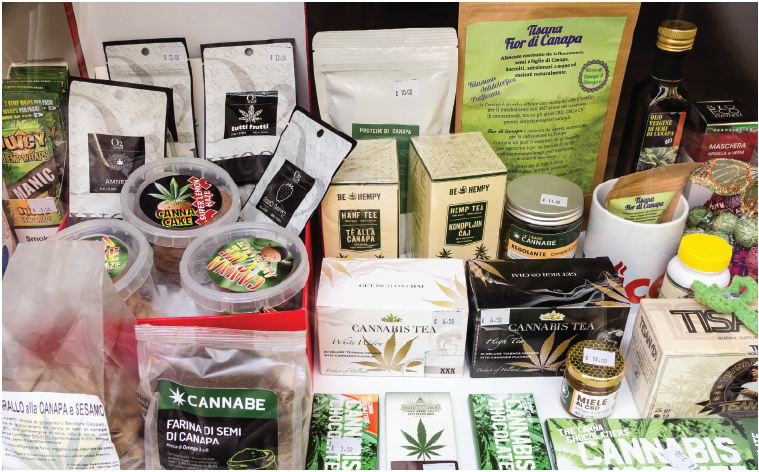The Case for Retail Marking

As legalized cannabis markets move beyond start up mode, there is an emerging dialogue looking at new challenges and questions that are driving regulators to ask what an effective framework for legal cannabis should look like: How can we protect consumers and ensure only appropriately tested, legitimately produced products are being consumed? How can we maximize tax revenue? What are we doing to ensure equity within the market?
Over the next few weeks, I'll be sharing insights on these topics based on my conversations with cannabis regulators, law enforcement and the cannabis industry and from my presentations at events like Canna East, Canna West. and at Federation of Tax Administrator conferences. Through this series of blogs, we'll take a deeper dive into each of the major issues that are driving current conversations and policy, and offer insights into how states can continue to enhance their regulatory and compliance structures as cannabis markets form and existing markets mature.
Protecting Public Health
The majority of cannabis regulatory frameworks that are operational today are not designed to enable rapid and confident validation that retail products being purchased by consumers are legally sourced, appropriately tested and have origins from licensed operators. As the market for cannabis products like edibles and CBD oil hits new levels, this shortfall in traceability through to the final retail products leaves many of us wondering if we are prepared to protect consumers from a worst case scenario. We are seeing the effects of this gap in the current health crisis gripping the nation where illicitly sourced and counterfeit vape products containing THC are leading to a dramatic spike in hospitalizations and even fatalities. In this blog post we will look at potential solutions for closing the retail unit gap to enable regulators, inspectors, enforcement and the public to confirm the origin of cannabis products.
Maximizing Tax Revenue
The millions in promised tax revenue from recreational cannabis was, and continues to be, one of the major drivers for legislators and voters when legalizing the adult use of cannabis. While many proponents of legalization pointed to cannabis taxes as a ‘cure all’ for plugging fiscal holes, funding infrastructure or enhancing education initiatives, many states still struggle to secure the promised revenue from the expanding industry. Markets are plagued by the continued reality of a strong black market - whether from tax and fee costs that put legitimate products at a significant cost disadvantage or state-specific issues dealing with too much or too little product supply and availability. As a result, many states have not realized projected collections, losing out on millions of dollars in potential tax revenue annually. This blog post will look at examples from other highly regulated industries, including the use of tax stamps to close compliance and revenue gaps.
Providing opportunities for historically impacted communities to participate
As cannabis licensing has started to mature, there is a growing realization that these programs must do more to support the social contract of legalization - namely by providing opportunities within the licensing program for historically impacted and disadvantaged communities. The impact of cannabis on historically disadvantaged communities has been a concern among states since long before Colorado and Washington became the first two states to legalize recreational marijuana. And while a number of states have begun to build social equity requirements into their licensing framework as means to provide redress for some of these impacts, the success of these programs have been limited, and the big question that remains is how can they ensure these communities have an opportunity not only to access markets but also sustained viability? This blog will focus on how retail marking can create pathways for enabling minority-owned licensees to launch and sustain cannabis businesses.
Ensuring Product Legitimacy
In the end it all comes down to ensuring that the product reaching consumers can be quickly verified as legitimate and safe. The recent public health crisis on counterfeit THC-infused vape products and other examples of brand counterfeits provide examples of the potential liability to industry and regulators from the presence of knock-off, unsafe and illegally sourced cannabis. This blog post will explore how securely marking retail products units can ensure that all products are being grown in compliance with safety and tax regulations, are traceable in case of recall, and provide consumers with sufficient information about their purchases.

With more than 18 years of experience assisting state and local agencies in developing and adopting regulatory, policy and enterprise technology initiatives, Alex oversees SICPA’s relationships with more than 45 U.S. states and 160 municipalities, all of which use SICPA’s products for supply chain verification and control (including the SICPA track and trace program currently used by the State of California). As the Director of Business Development for Meyercord Revenue, a SICPA company, has developed new market opportunities for SICPA in emerging markets subject to excise tax including alcohol, OTP and medical marijuana. Prior to joining SICPA, Alex spent more than 12 years at Accenture and several years at Oracle.
